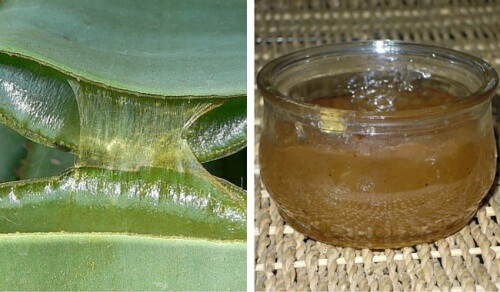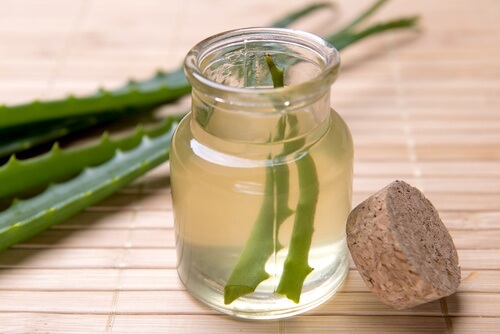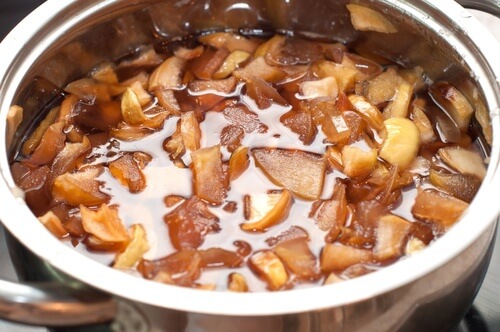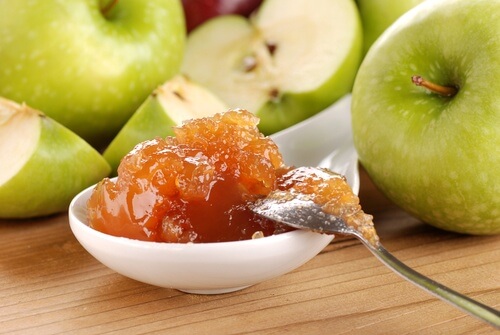How to Make a Healthy Aloe Vera Jelly


Reviewed and approved by the physiotherapist Sofía Quintana Alonso
Several cultures value the gel inside Aloe vera plants because it’s rich in nutrients and has several therapeutic applications. You can use it to make a delicious Aloe vera jelly that will provide you with many benefits, so keep on reading.
Aloe vera is an excellent antiseptic and natural cleanser that can destroy numerous types of diseases that affect your health.
It also stands out an a natural anti-inflammatory, perfect for people who suffer from diseases such as arthritis, constipation, ulcers, and more.
Read also:
Aloe vera contains 19 essential amino-acids. These substances are necessary for forming and structuring the proteins that the body needs for cells and tissues.
Regularly consuming this gel helps improve the metabolism and facilitates the removal of toxins accumulated in the body.
More importantly, it’s a very versatile ingredient that can be incorporated into your daily diet in a lot of different ways.
Because it has a gelatinous texture, you can also use it as a base for making natural jelly.
This natural aloe vera jelly recipe is easy to make and creates a homemade tonic and anti-acid that you can use in several different ways.
What is natural aloe vera jelly?

Natural aloe vera jelly is a 100% organic product that has very few calories and provides several health benefits.
Unlike jams and jellies made from fruit, this jelly doesn’t have any refined sugars or other unhealthy chemical additives.
You can make it by combining aloe vera gel with pectin, which is a type of dietary fiber found in apple peels and apple cores. The role of pectin is making the jelly a gelatinous substance.
It’s very easy to make at home and it’s absolutely necessary for the jelly to firm up.
How to make homemade pectin

To make this ingredient, it’s important that you get organic apples. Also, use a nylon straining bag to make sure you’ve strained it properly.
Ingredients
- 900 grams of apple peels and apple cores
- 1.7 liters of water
Instructions
- Place the apple peels and cores in a big pot. Add the water and then place them over medium heat until they turn into a puree.
- Once you have the puree, let it set for a few minutes and pour it through the nylon straining bag.
- Set it aside in a bowl and begin to make the jelly.
Homemade aloe vera jelly recipe

Another ingredient that you’ll need to add to this aloe vera jelly is lemon. In this case, it not only provides more nutrients, but it also acts as a natural preservative to prolong the shelf life for this product.
The aloe vera gel shouldn’t be in very hot environments, because this will reduce its nutritional properties.
The key to prevent it from boiling is to add the pectin before you start to use the other ingredients.
You will need:
- 2 cups of aloe vera gel (500 grams)
- 1 1/2 cups of organic sugar (350 grams)
- 1 1/2 cups of water (350 mL)
- One tbsp. of pectin (20 grams)
- 2 Tbsp. of lemon juice (20 mL)
- 1 glass jar
Directions
- Put the water in a pot and begin to heat it with the sugar to create a syrup.
- Stir continuously with a wooden spoon to make sure it is well-dissolved.
- Keep in mind your cooking time, because if it is left on heat for too long it will caramelize.
- Once you have the syrup, remove from heat. Allow to cool for a few minutes, then add the aloe vera gel, the pectin and lemon.
- Continue stirring until all ingredients are mixed well. Heat on low heat for complete mixture.
- Once you have the consistency that you like, store in the glass jar with a lid.
Method of consumption
- You can eat this natural aloe vera jelly on its own or with fruit and natural juices.
- Eat one tablespoon in the morning, and another half tablespoon in the afternoon.
- Eat an additional tablespoon if you suffer from heartburn, ulcers or infections.
- Avoid eating too much as it does possess laxative properties, which could cause undesired effects.
Read also:
Did you like this recipe? Now you know how to make it at home, so use it with your diet.
Habitual usage of this aloe vera jelly will improve your digestion, help you lose weight, and prevent the development of various types of health problems.
All cited sources were thoroughly reviewed by our team to ensure their quality, reliability, currency, and validity. The bibliography of this article was considered reliable and of academic or scientific accuracy.
- Hu, Y., Xu, J., & Hu, Q. (2003). Evaluation of Antioxidant Potential of Aloe vera (Aloe barbadensis Miller) Extracts. Journal of Agricultural and Food Chemistry. https://doi.org/10.1021/jf034255i
- Radha, M. H., & Laxmipriya, N. P. (2015). Evaluation of biological properties and clinical effectiveness of Aloe vera: A systematic review. Journal of Traditional and Complementary Medicine. https://doi.org/10.1016/j.jtcme.2014.10.006
- Rajeswari, R., , M. Umadevi, C. S. R., & , S. Selvavenkadesh, K. P. Sampath Kumar, D. B. (2012). Aloe vera: The Miracle Plant Its Medicinal and Traditional Uses in India. Journal of Pharmacognosy and Phytochemistry.
This text is provided for informational purposes only and does not replace consultation with a professional. If in doubt, consult your specialist.








